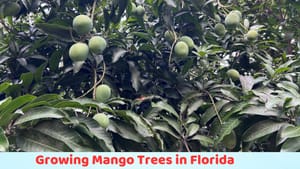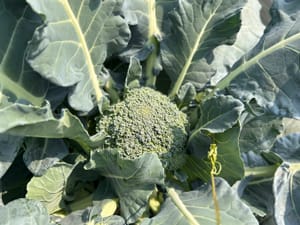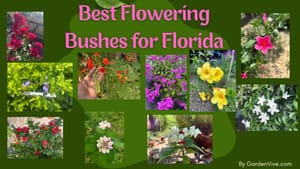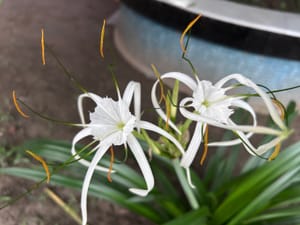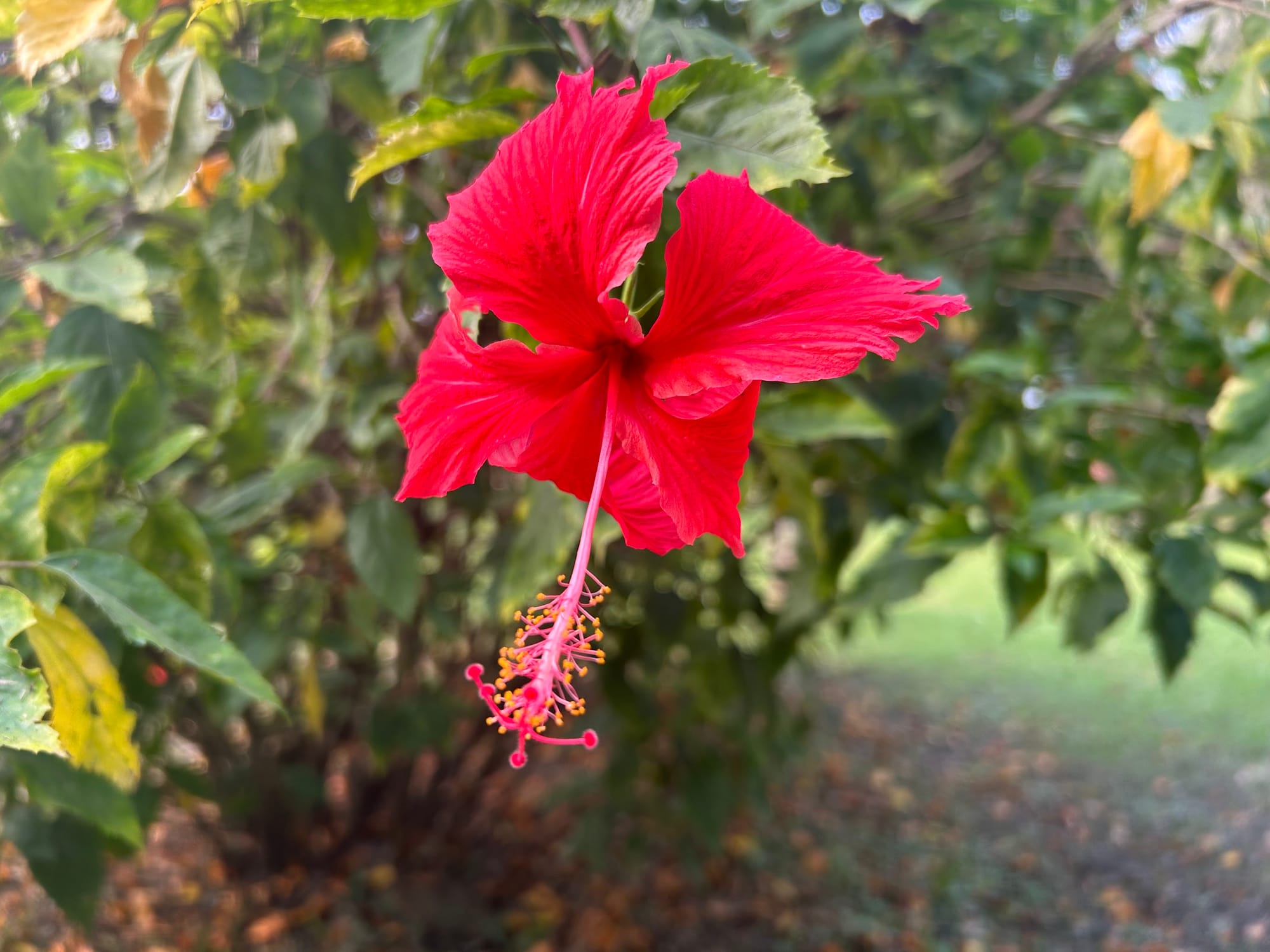
After growing hibiscus in Florida for years, I’ve gained so much experience that I feel it’s time to share everything I’ve learned with you. In this article, you will find a complete growing and caring guide for Hibiscus in Florida.
There are many types and varieties of hibiscus, each with its own growing needs. Some are evergreen, while others are not. You will find the types and their growing guide in this same article.
I am covering the following:
- Types of hibiscus we can grow in Florida, with their blooming season
- Planting time with planting methods
- Caring
- When to prune hibiscus in Florida
- Bonus tips
Types of Hibiscus to Grow in Florida
There are three main types of hibiscus that we usually grow here.
- Tropical Hibiscus
- Hardy Hibiscus
- Native Hibiscus
| Type | Description |
|---|---|
| Tropical Hibiscus (Hibiscus rosa-sinensis) |
Evergreen shrub with large, bright flowers. Popular in Florida landscapes but sensitive to cold temperatures. Best for Zones 10–11 or protected spots in Zone 9. |
| Hardy Hibiscus (e.g., Hibiscus moscheutos) |
Dies back in winter and regrows in spring. Large, showy flowers. More cold-tolerant and this is why it's preferred to grow in North and Central Florida (Zones 8–9). |
| Native Hibiscus (e.g., Hibiscus coccineus, H. grandiflorus) |
Attracts pollinators and birds. I will suggest it for for rain gardens and naturalized landscapes. |
If you are in South Florida, you can grow tropical hibiscus easily. The native hibiscus can be grown all over Florida ( From USDA Zone 7 to 11)

Hibiscus Blooming Time in Florida
| Type | Blooming Period |
|---|---|
| Tropical Hibiscus | Blooms almost year-round in South Florida; spring through fall in Central Florida |
| Hardy Hibiscus | Mid-summer to early fall (July to September) |
| Native Hibiscus | Late spring through early fall (May to October), depending on species |
If your hibiscus is not blooming in the blooming season, read this guide: Hibiscus is not blooming - what to do?
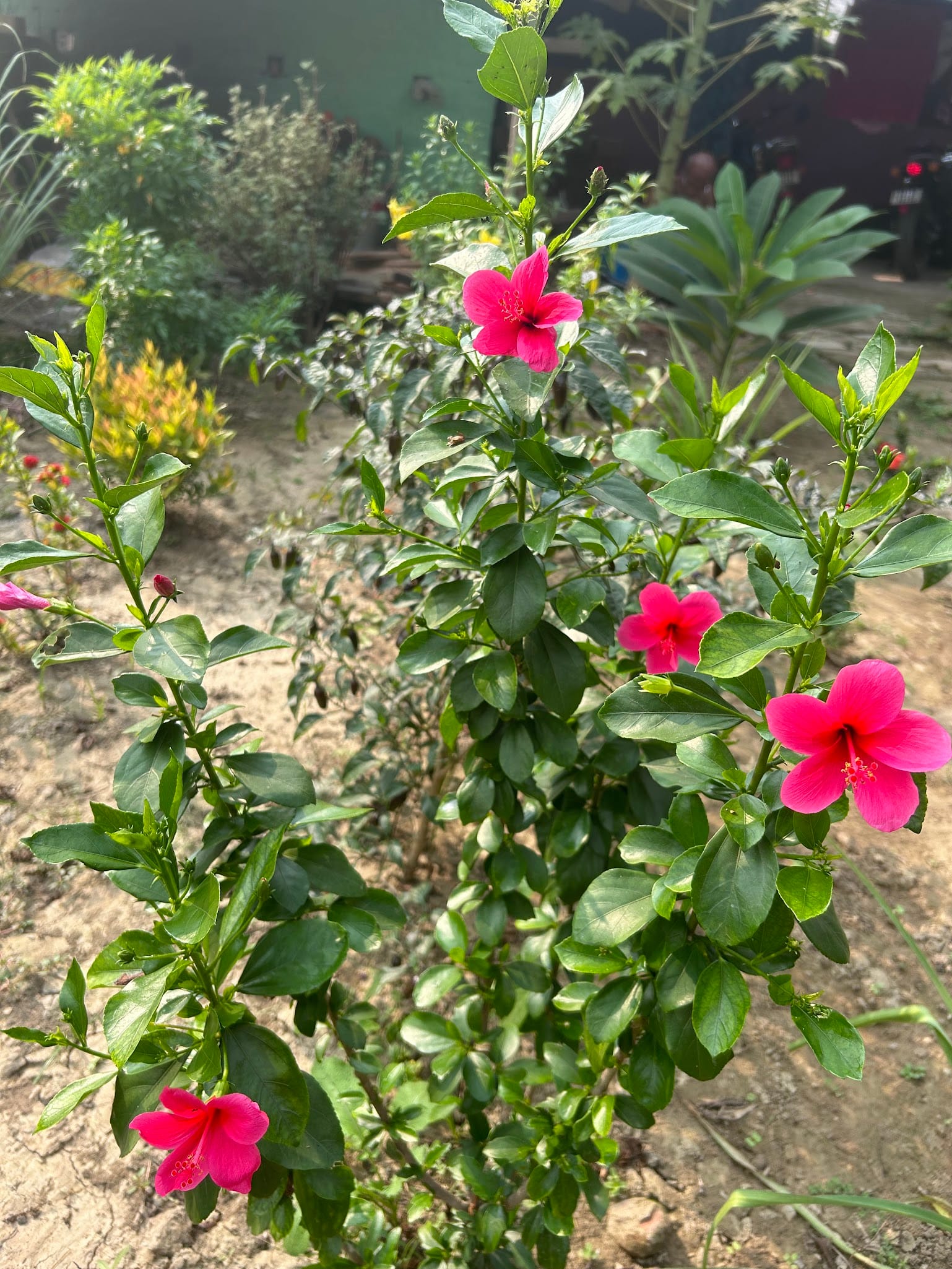
Hibiscus Planting Time, Planting Method, and Caring in Florida
| Region | Best Planting Time |
|---|---|
| South Florida (Zones 10–11) |
Year-round (preferably spring or early summer) |
| Central Florida (Zone 9) |
March to May |
| North Florida (Zone 8) |
Late March to early May, after last frost |
Let me explain this...
If you ask me the best planting time for hibiscus, my answer will be spring to early summer for Florida gardeners. (No matter which part of Florida you live in)
But as per my personal growing experiences, in South Florida, we can plant anytime of the year (year-round). All the credit goes to the tropical to subtropical climate of South Florida.
Now, moving to the planting method:
Can we grow hibiscus from seeds?
The theoretical answer is yes. But practically, it will take a much longer time than growing hibiscus from cuttings.
If you grow it from seeds, you may get new varieties and color combinations due to cross-pollination.
Propagation of hibiscus from cuttings is not that easy for beginners. It's best to buy a hibiscus plant from your nearby nursery and then plant it in your garden.
Hibiscus needs full sun, which means 6 to 8 hours of direct sunlight, and partial shade will be okay.
I'm mentioning this in the planting method section because it will help you choose the right spot for planting.
Choose a location that will receive good sunlight (direct).
Avoid low-lying areas, as they may become waterlogged.
Most of the Florida soil is sandy. You have to understand "sand does not include nutrition".
If you are using your sandy garden soil, make sure you add some organic matter. You can use peat moss, compost, aged manure, etc.
Dwarf or compact hibiscus varieties can be grown in both pots and directly in the ground. Still, I recommend planting them in the ground. It will help the roots to spread naturally.

The above image is of a compact/dwarf hibiscus and can be grown easily in larger pots.
Watering
Water daily for the first 10 days ( I mean to say do not let the soil dry in the early stage of plantation). Then you can reduce watering.
When the roots are established well and grow through your garden soil, you can water twice a week. It's all about soil type and climate.
You may notice yellow hibiscus leaves; the reason might be a watering issue. If you want to compare with pictures, have a look at this detailed guide:
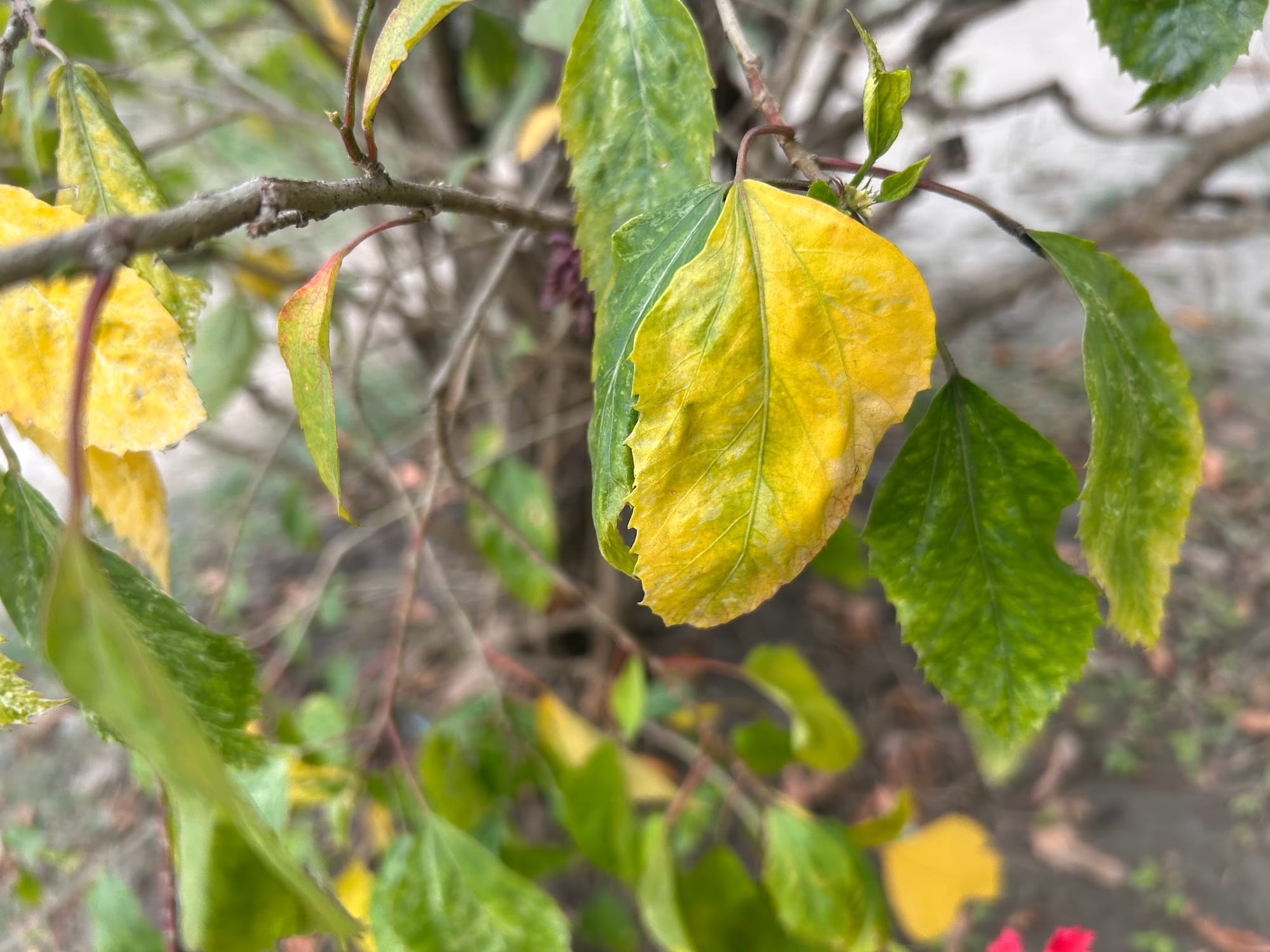
Fertilizer
They are heavy feeders. You can use any balanced fertilizer. But when it's time for new buds, use phosphorus-based fertilizers. It will help produce healthy buds and blooms.
One major issue with hibiscus
If you are from a warmer part of Florida, there is a huge chance that your hibiscus plant will be attacked by mealybugs.
My father killed one of my hibiscus plants just for the mealybugs. The bugs will spread to other plants quickly.
I finally managed to deal with mealybugs, and here is my guide for you: Get rid of mealybugs on hibiscus
If you use too much fertilizer, especially nitrogen-based, you will get to see a lot of greeny leaves with no buds or fewer buds.
If your hibiscus is not blooming, here's what to do: hibiscus is not blooming - what to do
Hibiscus as a privacy hedge
If you are planning to grow hibiscus as a privacy hedge, you should go for the tall varieties.

These are almost 5 years old, and they keep blooming.
Here are a few other tips for your hibiscus
- Never transplant when the sun is at its peak. Do it in early morning or late afternoon to reduce stress.
- DO NOT use heavy clay soil. (never ever)
- Keep an eye regularly on the hibiscus leaves just to check for mealybugs.
Sometimes, I pick mature hibiscus buds and place them in water. They usually bloom within a day.
I love taking pictures from my garden and sharing gardening guides. Subscribe to this site to get more unique articles.
Here is a hibiscus picture from my Florida garden:
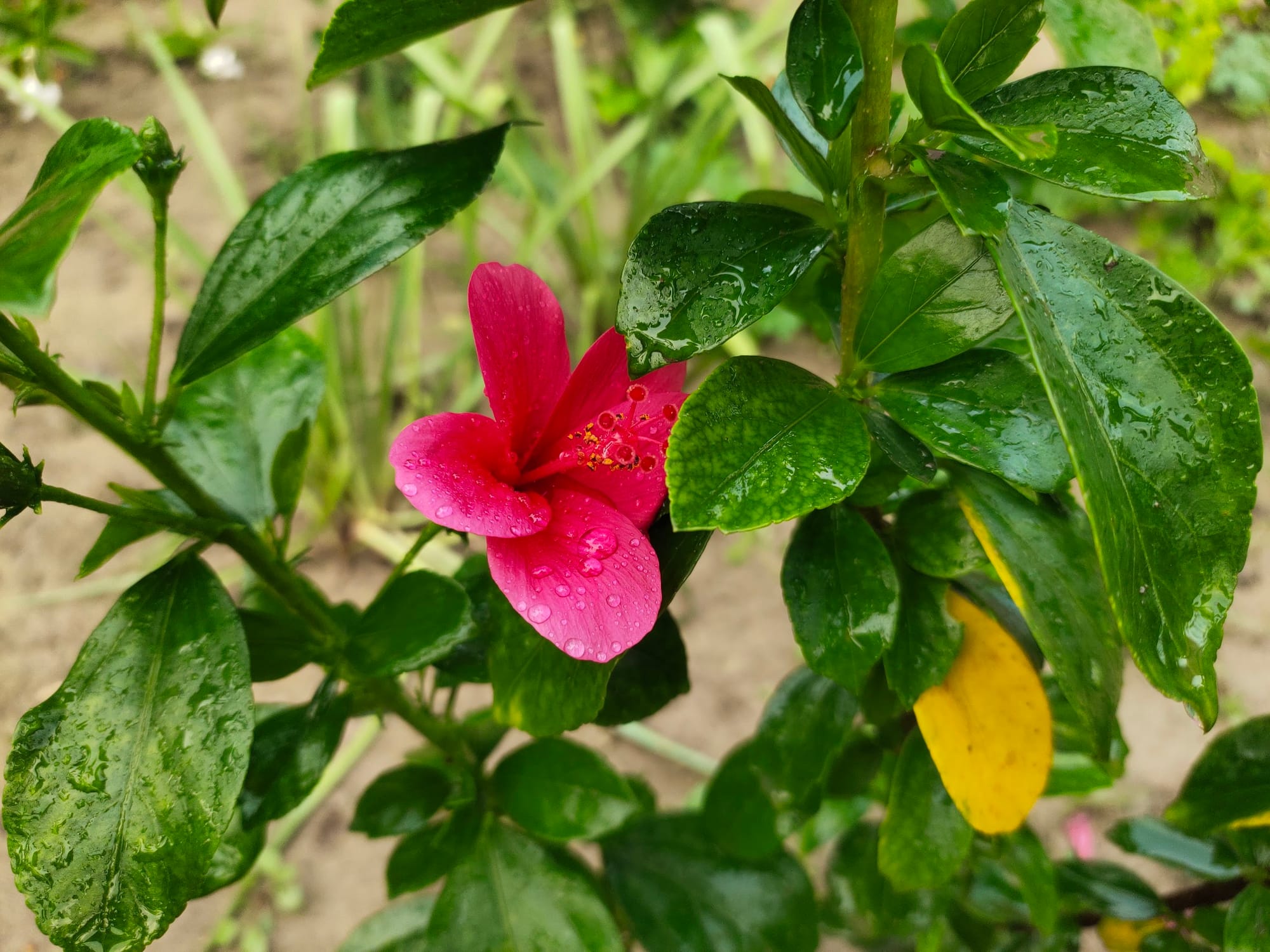
When to prune hibiscus in Florida
| Region | USDA Zone | Hibiscus Type | Best Pruning Time |
|---|---|---|---|
| South Florida (e.g., Miami, Keys) |
10b–11 | Tropical | Mid-February to early March |
| Hardy/Perennial | Late fall (Nov–Dec) or early spring (Feb–Mar) | ||
| Central Florida (e.g., Orlando, Tampa) |
9a–9b | Tropical | Late February to early March |
| Hardy/Perennial | Late fall (Nov–Dec) or early spring (Feb–Mar) | ||
| North Florida (e.g., Jacksonville, Panhandle) |
8b–9a | Tropical | Early March (post-frost) |
| Hardy/Perennial | Late fall (Nov–Dec) or early spring (Mar) |


